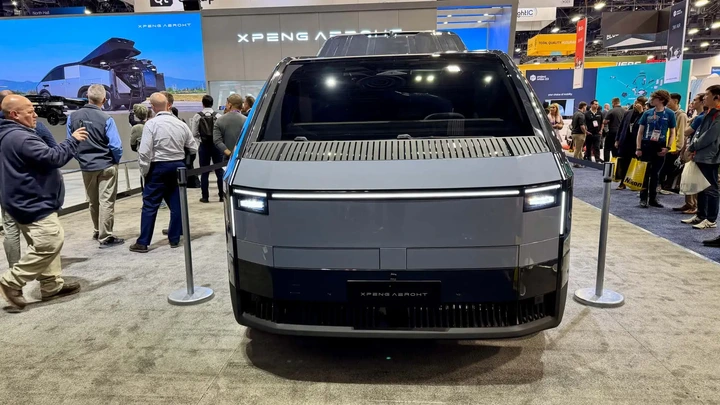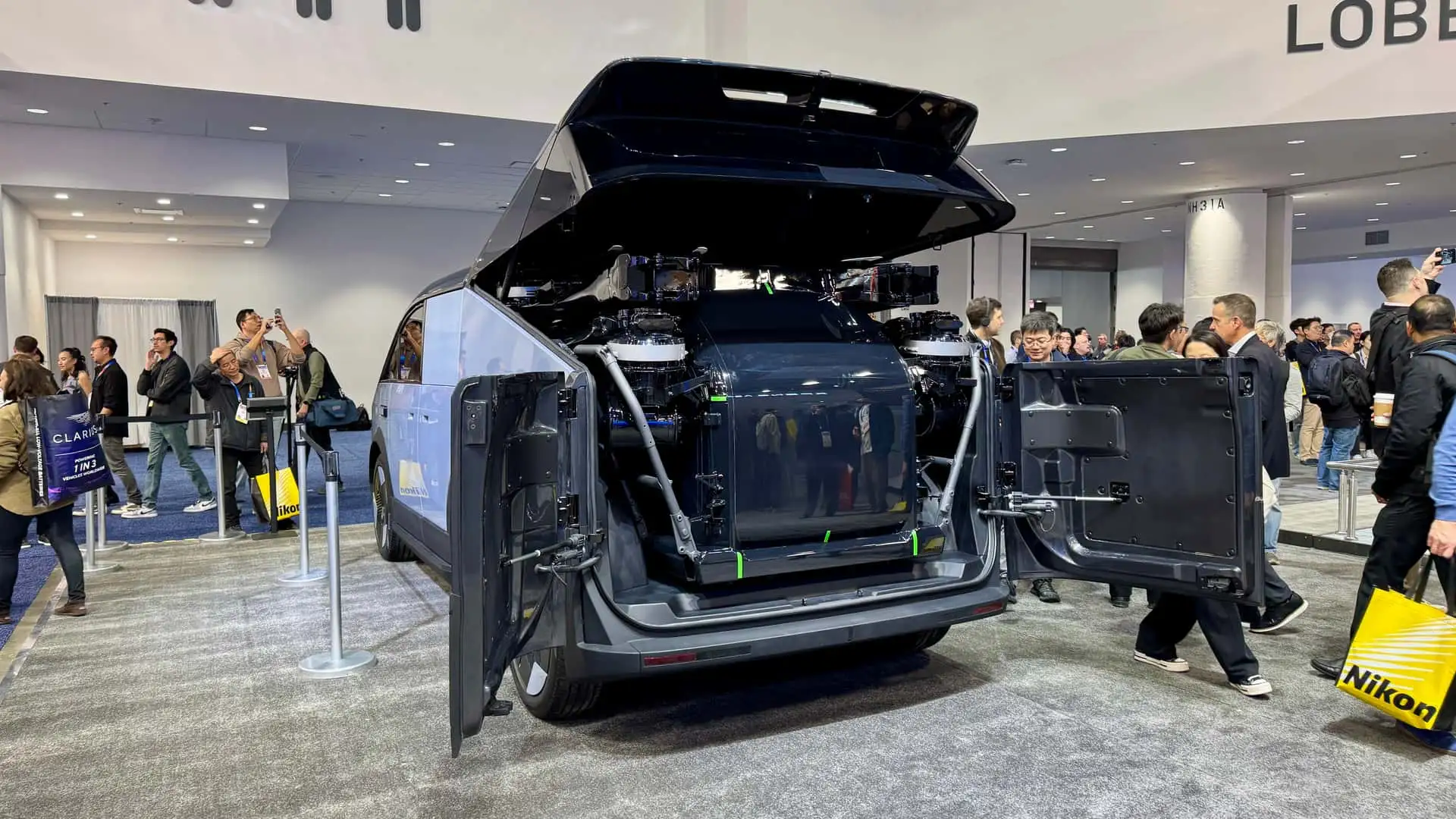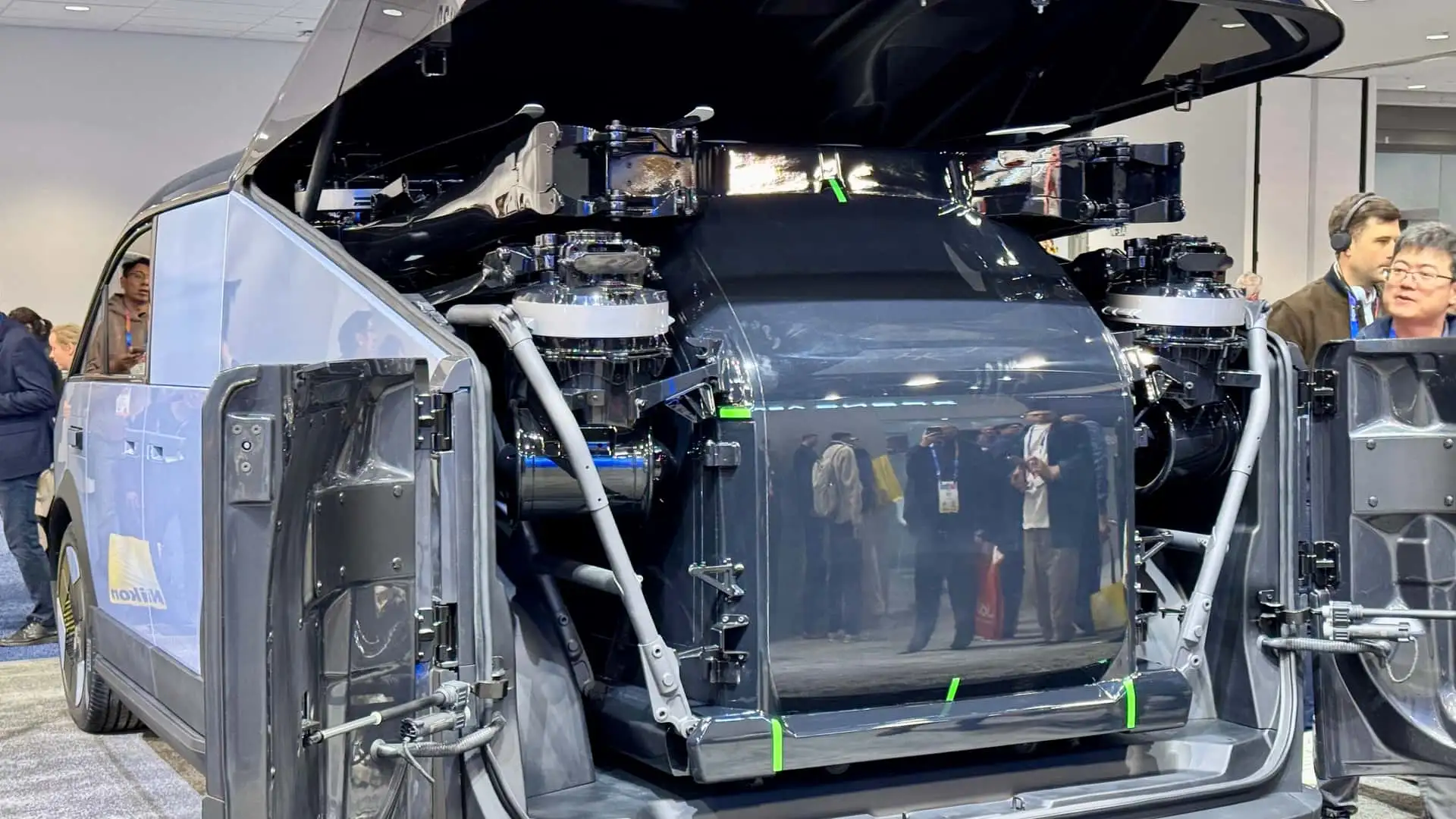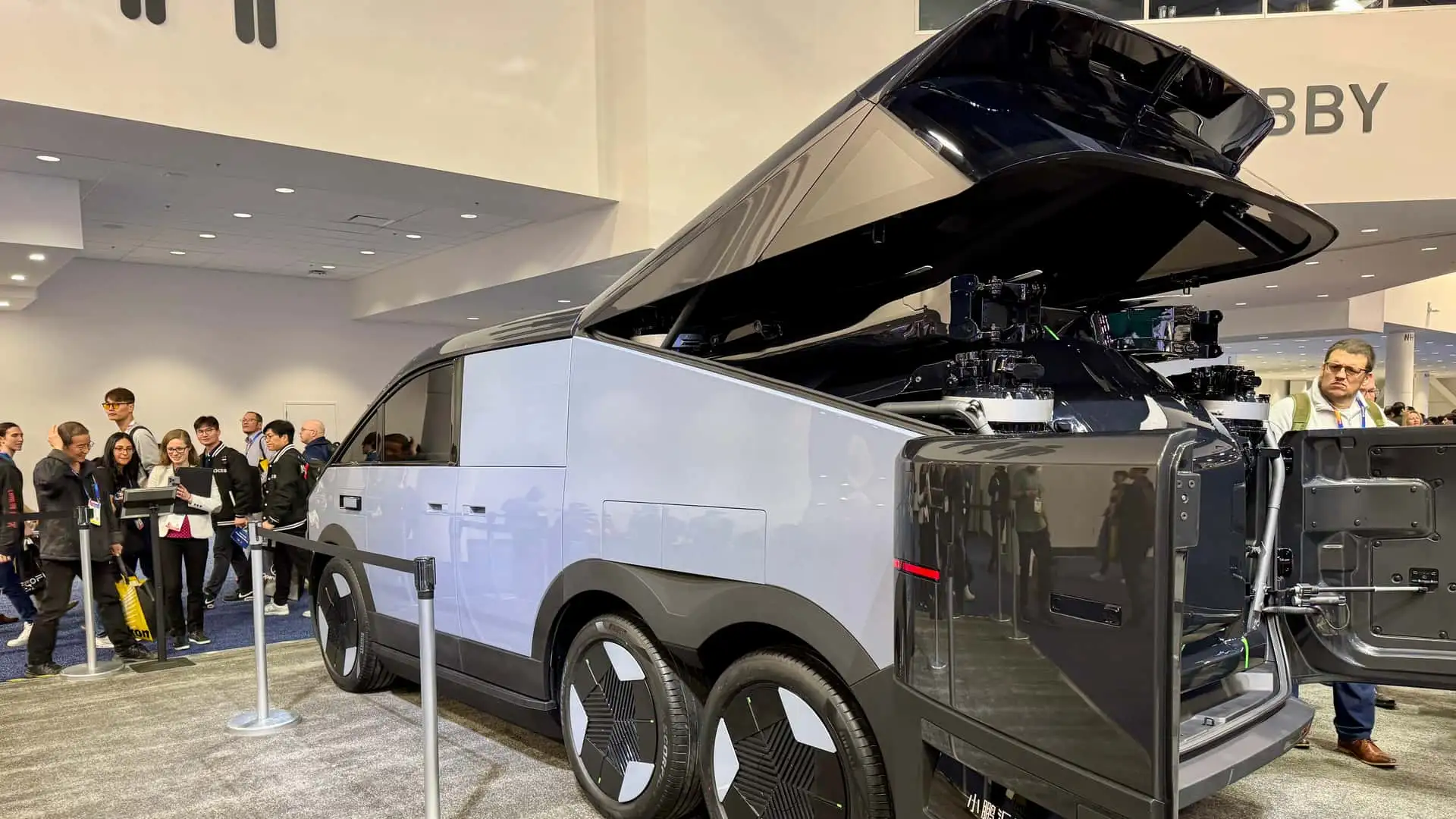CES has a rich legacy when it comes to flying cars. However, the CEO of Xpeng AeroHT asserts that the company is genuinely committed to making it a reality. Will they succeed?

View pictures in App save up to 80% data.
"Let me show you a magic trick," Wang Tan said to me. We were surrounded by throngs of onlookers at CES, all of them starting at the hulking gray-and-black van his company hopes to make a reality soon. "One, two, three." And with a snap of his fingers, the rear section of the Land Aircraft Carrier opened up, revealing a folded-up flying machine tucked away inside.
If all goes according to plan—a wild, ambitious, nearly unbelievable plan even by the fanatical standards of CES—then about a year from now, people in China will be able to buy that six-wheeled electrified van, then take to the air in the electric vertical take-off-and-landing (eVTOL) craft that's stored inside of it. It will be a go-anywhere, do-anything combination of vehicles. You can go camping or do some light off-roading in the van, and then go where no car could ever take you in its companion craft.
Tan is right when he calls it "magic." Pulling off a car like that, if it can even still be called a car at this point, would be nothing less than an act of pure sorcery. Yet Tan said his venture, Xpeng AeroHT, says they're committed to making it happen.
You can be forgiven for whatever skepticism you may be feeling right now. It's certainly warranted. But the first word in that company's name, Xpeng, has me keeping an eye on this airborne adventure.
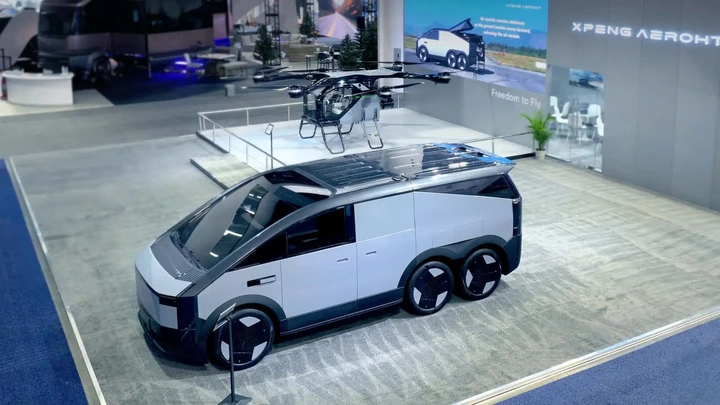
View pictures in App save up to 80% data.
Image credit: Xpeng
Xpeng AeroHT CES Images
The Main Vessel and the Aerial Unit
CES has been home to "flying car" hype since maybe always, and nobody's pulled it off yet. That's probably why the vehicle that drew the most attention was the van parked beside the aircraft. Xpeng AeroHT calls it the "Mothership," and it makes a Tesla Cybertruck look almost subtle by comparison.
It's massive, measuring eighteen feet in length, six-and-a-half feet in height, and the same in width. It rolls on six wheels supported by three axles. According to the company, the design is "inspired by what a Lunar Rover for Earth might resemble." Despite the aircraft stored in the rear, the cabin accommodates four passengers (though the interior was not showcased during the prototype presentation at CES).
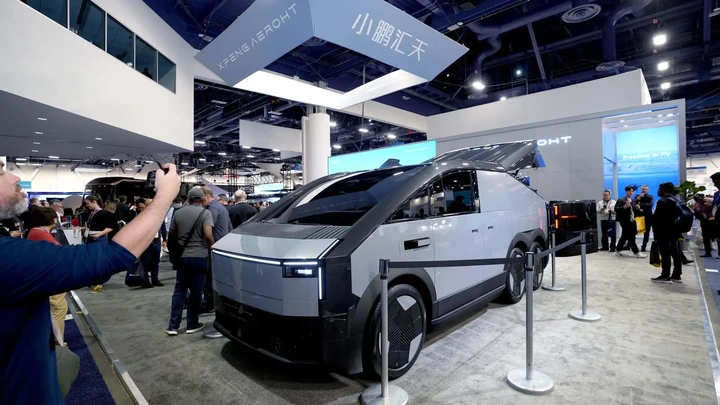
View pictures in App save up to 80% data.
Image credit: Xpeng
Xpeng AeroHT CES Images
The vehicle is powered by an unnamed gasoline engine combined with a sophisticated powertrain system. The manufacturer asserts that it will feature "the world’s first 800-volt silicon carbide range extension power platform," which incorporates cutting-edge electrical architecture and rapid charging capabilities into a vehicle segment that typically lacks such features. It is estimated to offer a range of approximately 620 miles (1,000 km), although this figure is based on China's notably favorable CLTC testing cycle.
That powerplant is also responsible for charging the aircraft itself: the Air Module. Also built on an 800-volt electrical system, it has six rotors with foldable propellers and arms. The Mothership, on a full charge, can support up to six flights, although the eVTOL's aerial range is unspecified.
However, I would contend that the method in which it launches from the Mothership is the true spectacle. The van's roof elevates, and the two rear doors swing wide, allowing the aircraft to advance as its legs descend to the ground. Once everything is set, the van departs, leaving the eVTOL primed for takeoff.
I had the opportunity to experience it firsthand. The interior is quite snug, reminiscent of squeezing into a first-generation Mazda Miata. However, Tan, who is a helicopter pilot, explained that the aircraft's single-joystick design allows for a simple flying experience. Of course, in China, its use will be restricted to individuals holding the appropriate pilot's licenses.
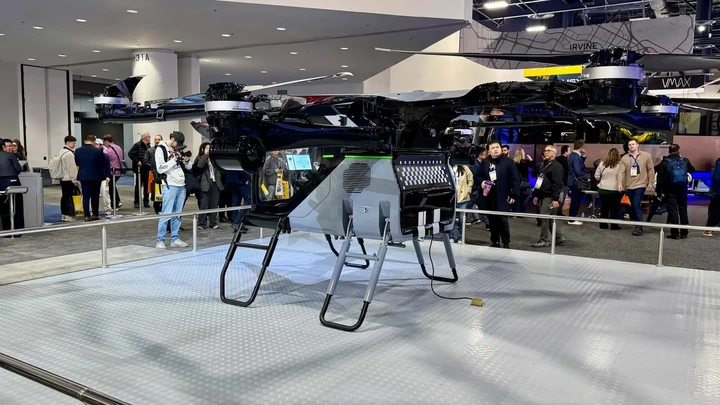
View pictures in App save up to 80% data.
Image captured by: Patrick George
Xpeng AeroHT
"According to Tan, learning to pilot a craft typically requires 40 to 50 hours of training. However, with just a few minutes, you could grasp how to operate this one." Perhaps that's true. The most remarkable aspect of the offering seems to be its autonomous features: "automated route planning, real-time airspace monitoring, and landing vision assistance," as stated by the company. Considering the current limitations of automated driving assistance on the road, I find myself quite doubtful about this claim.
However, the key point is this: everything presented at CES is theoretically feasible, though it may be quite distant from the actual situations we face in practice.
What’s the cost? Based on previous reports, it’s approximately 2 million yuan, translating to roughly $275,000 with today’s exchange rates. It may seem unbelievable, but honestly, it’s quite reasonable considering all that’s included. This price is just about $25,000 higher than a Lucid Air Sapphire, which, as of now, doesn’t come with any flying capabilities.
What Exactly Is Xpeng AeroHT?
What's more likely, even as Xpeng AeroHT claims that deliveries are planned for 2026, is that the company is demonstrating future technologies it's working toward—as are many competitors in this space. Toyota is partnering with air taxi startup Joby, Hyundai has started an aerial division called Supernal and Stellantis is doing something similar with Archer Aviation. If aerial personal vehicles and taxis catch on, the big players don't want to get left behind.

View pictures in App save up to 80% data.
Image captured by: Patrick George
Xpeng AeroHT
That apparently includes Xpeng. Along with BYD, Li Auto, Nio and a few others, it's one of the more prominent Chinese automakers to emerge in recent years. It's also one that may be profitable on EV sales sometime in 2025. With offices in California and Germany as well as its Guangzhou headquarters, Xpeng clearly has global ambitions. Wherever it lands, it seems poised to do well. Its EVs are sleek and high-tech, so much so that Tesla's updated Model Y has been accused of being an Xpeng copycat. Plus Xpeng is branching into the extended-range electric vehicle (EREV) game as well.
Xpeng Aero HT, Xpeng's aerospace subsidiary, is clearly focused on future innovations. Originally established as an independent entity in 2013, Aero HT received a significant investment from Xpeng in 2020, leading to their collaboration in forming a new company. Since then, Aero HT has conducted multiple successful test flights and showcased its Air Module at last year's CES. With a recent $150 million raised in Series B funding, the company is now dedicated to creating "the world’s first mass-production flying car factory equipped with a modern assembly line" aimed at producing both the Mothership and Air Module.
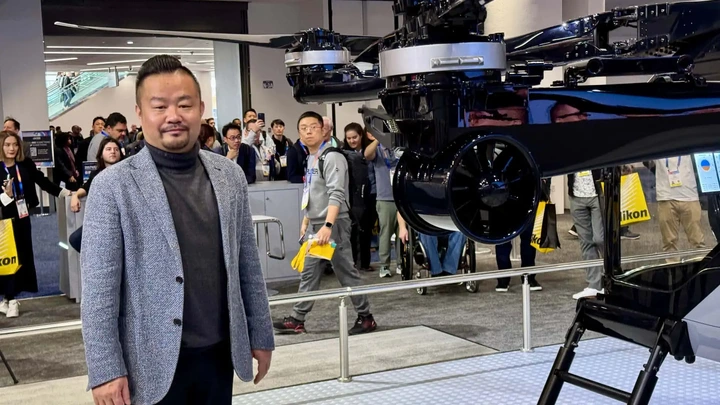
View pictures in App save up to 80% data.
Image captured by: Patrick George
Wang Tan from Xpeng AeroHT.
There are other plans involved here too. Xpeng AeroHT says that Phase One is this vehicle; Phase Two is a high-speed, long-range aerial standalone craft and Phase Three is a full-blown eVTOL Flying Car with more derivatives along the way.
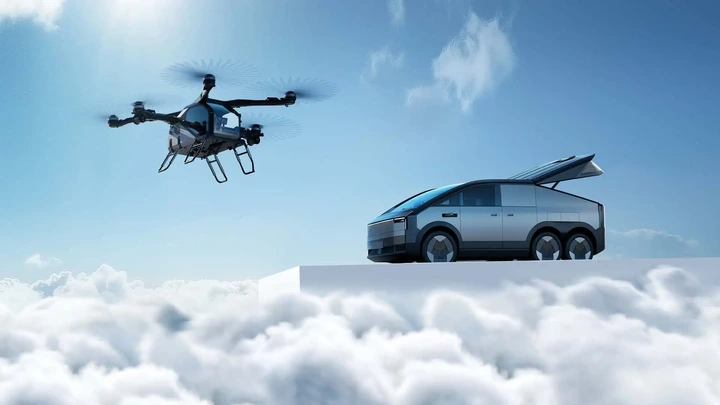
View pictures in App save up to 80% data.
Image credit: Xpeng
Xpeng AeroHT CES Images
Like I said: wild, ambitious and nearly unbelievable. And as TechCrunch noted, companies like Joby and Archer Aviation have each raised about $3 billion, so it's going to need a ton more than it's raised so far to make these dreams come true. But we're seeing all of the time what Xpeng is up to on the electric vehicle side of things. These future-forward automakers don't want to give up on the potential of electric aviation long term.
Who can say? Perhaps the van could actually come to life, separate from the aircraft. While it may be confined to the earth, it still holds its own kind of enchantment.
Exhibition: Xpeng AeroHT

View pictures in App save up to 80% data.
33
Got a tip for us? Email: [email protected]
